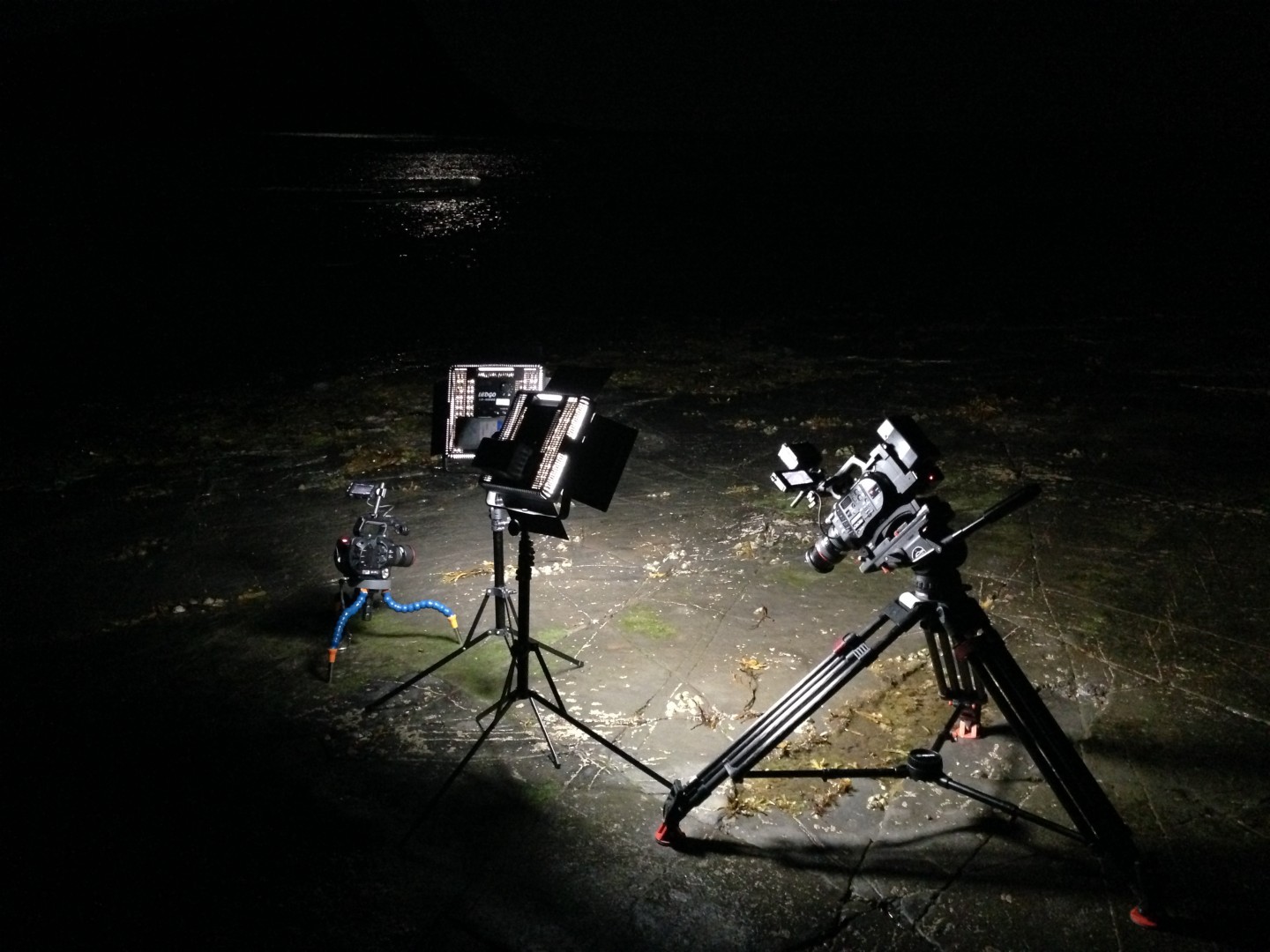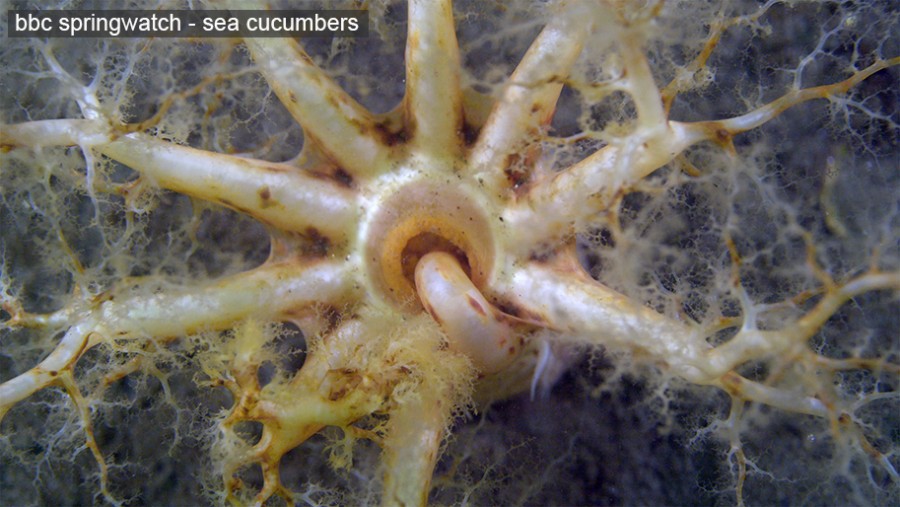Studland Bay – Juvenile Undulate Ray
Posted on August 25, 2015
A couple of weeks ago, Andy dashed to Dorset after our friends, Steve Trewhella and Julie Hatcher, sighted the first sea horse of the year at Studland Bay.
Andy and Steve found and filmed a pregnant male sea horse and his mate. This is great news and confirms that despite the continuing anchor and mooring disturbances, sea horses are continuing to breed at Studland Bay.
There was an added bonus. Steve and Julie have found spent Undulate Ray egg cases on the strand line in the past. The Undulate Ray (Raja undulata), a member of the shark family, is on the IUCN red list of endangered species. However, without official recorded sightings of adults or juveniles in the bay, the egg cases haven’t been enough to prove that the site is a nursery and breeding area. On two consecutive days, Andy and Steve found different juvenile undulate rays and filmed them. When you see how camouflaged they can be it’s not surprising these animals are rarely seen and have never been filmed at Studland.
This new footage proves beyond doubt that the eel grass at Studland is a nursery for growing Rays as well as a breeding site for both UK species of our iconic sea horses. Lets hope this new information helps tip the balance in favour of marine protection for Studland Bay.
With thanks to Steve Trewhella and Julie Hatcher for all their help in capturing this rare footage.
Images by Andy, words by Jackie
Pembrokeshire Ballet Company
Posted on August 3, 2015
Andy’s been filming in Pembrokeshire lately. Beautiful bays dot the wild west coast of Wales, providing shelter from Atlantic surge and storms.
At the end of one dive, a Compass jellyfish joined him. The Chrysaora hysoscella dances into UK coastal waters around May and grows throughout the summer to reach 30cm across its bell, adorned with 16 radii compass-like markings.
Those long tentacles have a nasty sting, leaving angry red welts on skin. Andy joined this beautiful creature for a mesmerising pelagic ballet, and managed to dodge her stinging, swinging wake to capture this stunning video.
Images by Andy, words by Jackie
Return from the liminal zone
Posted on July 8, 2015
 I’ve just spent two nights and three days filming intertidal critters in Kimmeridge, Dorset. Working with Matt Fletcher for Off The Fence, Steve Trewhella, Nick Wilcox-Brown and I waded through the shallows, rigging lights, cameras, and hydrophones to look at the lives of those who live on the edge of land and sea.
I’ve just spent two nights and three days filming intertidal critters in Kimmeridge, Dorset. Working with Matt Fletcher for Off The Fence, Steve Trewhella, Nick Wilcox-Brown and I waded through the shallows, rigging lights, cameras, and hydrophones to look at the lives of those who live on the edge of land and sea.
Filming went really well. We’ve captured some fascinating stories, including behaviour that’s never been filmed before. It’ll be broadcast in a 3-part series called Wild Europe for National Geographic.
Special thanks to Steve for his encyclopaedic knowledge of Kimmeridge bay and generous help.
Andy
BBC Springwatch – Sea Cucumbers
Posted on May 25, 2015
Andy spent a week diving in Loch Duich, near the spectacular Eilean Donan castle in the western Highlands. He was searching for Psolus phantapus, an underwater creature that appears in sudden forests while breathing through its bum.
Sounds clever? It’s a pink-spotted sea cucumber. But you will gape as you watch it feed, long tentacles pulling food from the tide, stuffing it through a hole that looks astonishingly like… Well, like the bit it breathes through.
These amazing creatures colonise a muddy bank, 14m deep, near the tiny hamlet of Inverinate. Each May, they appear, and then they disappear. No one knows why.
They haven’t chosen an easy filming location. Even dancing scallops make silt clouds that hang thick in next-to-no tide. Ambient light changes rapidly. The Psolus are skittish. A passing crab will stop them feeding or make them dart under the mud.
At one end, ten arms spread out of a soft body and feed the central mouth. At the other end, their bottoms wink, disposing of waste – and breathing.
We do wonder which end they talk out of.
Although Spring sunshine has been warming our waters, in Loch Duich, it was a week of extremes beneath the snow-capped munros. Weather changed hourly: from icy hail storms with thunder and lightning to quiet stillness with beautiful light and warmth.
It was a magical week, discovering these striking animals in all their splendour. Big thanks to Janet Ullman, George Brown, and Sue Scott for their generous help and support.
The film was featured on episode 12 of BBC Springwatch, on Thursday 11th June.
Link to film
______________________
Images by Andy, words by Jackie
Springwatch Easter Special at Bempton RSPB Reserve
Posted on April 3, 2015
The BBC Springwatch team just broadcast a one-night-only Easter special from Bempton RSPB Reserve. It’ll be repeated on Sunday at 9pm, and on iPlayer if you missed it.
There are some wonderful views of the Yorkshire coastline near Flamborough Head, and we get up close to its colonies of gannets, kittiwakes, guillemots, and a passing woodcock sheltering in the lee of the lighthouse.
In the icy North Sea, the lumpy bumpy lumpsuckers are out there breeding in the kelp forest. Some of Andy’s footage has been combined with Michaela’s rock pooling and a hungry seal’s feast to create a short feature on these fascinating fish who will sacrifice themselves to guard their eggs from predators.
Why not join in the Great Spring Watch? Keep an eye out for oak leaves, 7-spot ladybirds, swallows, orange tip butterflies, and hawthorn blossom, then register your finds online.
If you fancy another look at beautiful Flamborough, here’s a cold and windy sunrise over those spectacular cliffs that Andy filmed while on a recent shoot with Nick Wilcox-Brown.
______________________
Images by Andy, broadcast by BBC2, words by Jackie.

